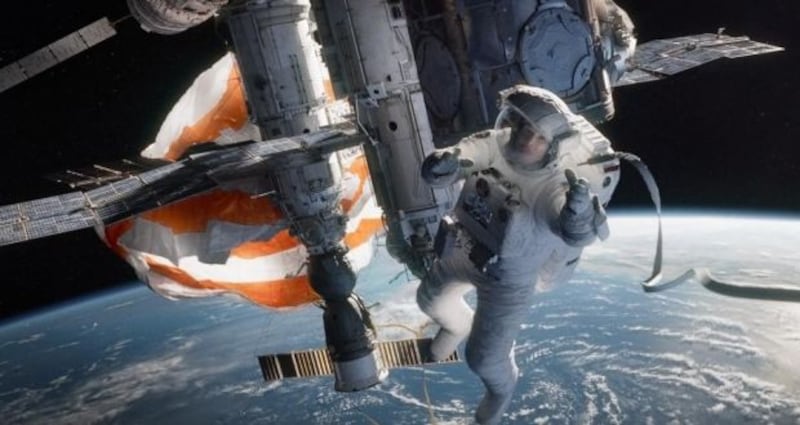Despite what you may have heard or concluded, Alfonso Cuarón’s indecently exciting palm-dampener is not, in any sense that matters, a sci-fi picture. No speculation takes place about future technologies. The lizard-people of Zongo remain in their lairs. Dystopian speculation is kept at bay.
What we have here is an exemplary shipwreck adventure. Cast adrift beyond the ionosphere, our protagonist is forced to shuffle between lumps of floating debris on her way towards (she hopes) the only usable life raft in near space. One can easily imagine Robert Louis Stevenson or H Rider Haggard getting a kick out of Gravity. It has the sort of dramatic propulsion those writers savoured.
This is not to pretend that the meticulous, unnerving realisations of the orbital experience do not constitute a great part of the film’s appeal. Cuarón begins as he means to continue: with a bravura 13-minute opening shot (taking up about a seventh the film’s duration) that brings us past a space shuttle to encounter astronauts repairing the Hubble Space Telescope.

The sequence serves to establish the story with great efficiency. George Clooney is grizzled veteran Matt Kowalski. Sandra Bullock is Dr Ryan Stone, an experienced medic making her first trip to space. Meanwhile, their colleague remains in his craft contemplating the fate of red-shirted Enterprise crew members.
Sure enough, debris from a Russian satellite strikes, damages the shuttle and casts the spacewalkers adrift. It is surely giving nothing away to say that Ryan is soon on her own.
Aside from accelerating the narrative, that opening shot does a great job of undermining any lingering instinct that standard orientation means anything in space. Cuarón and Emmanuel Lubezki, his brilliant cinematographer, reshot the entire sequence when they realised they had lazily assumed the shuttle should enter the right-way up. In the released version, the ship is (so far as our screen is concerned) inverted and that spatial anarchy continues throughout this concise, efficient picture.
Despite such efforts, there have already been suggestions that the film’s grasp of science is insecure. This satellite wouldn’t pass so near to this space station. The astronauts wouldn’t drift in that trajectory. And so on. This is so much baloney. The film-makers pay sufficient attention to the physics to secure verisimilitude while allowing themselves enough licence to create a workable story.
The film’s few nagging problems are a tad more pedestrian. Desperate to create character in (literally) a void, the script allows Bullock too many sentimental monologues concerning the miseries that turned her into a pathological loner. Clooney’s character is really just a blank variation on the whacky charmers – those James Coburn types – who chewed cigars in second World War capers from the 1960s.
Happily, Bullock has enough charisma and experience to muscle the ropey dialogue (of which there is more than you might think) into exhausted submission. The fact that Dr Stone is a little older than the average astronaut increases the character’s vulnerability and adds poignancy to her lonely plight.
Besides which, some practical catastrophe is always on hand to distract attention from the script’s inadequacies. From the beginning we are asking two questions. How can Ryan possibly survive for the next five minutes? How can Cuarón make a film from such an uncompromising scenario? Those tensions run hand-in-hand to a breathless conclusion.
Gravity is a technical marvel. The 3D is sufficiently energetic to justify any lingering surcharges at your local cinema. The Imax version fairly plasters you to the back of your seat. For all that, it succeeds on admirably old-fashioned values – gritty humanity overcoming seemingly insurmountable odds – that have powered gripping yarns since the time of Homer. It just about satisfies the rampaging hype.












